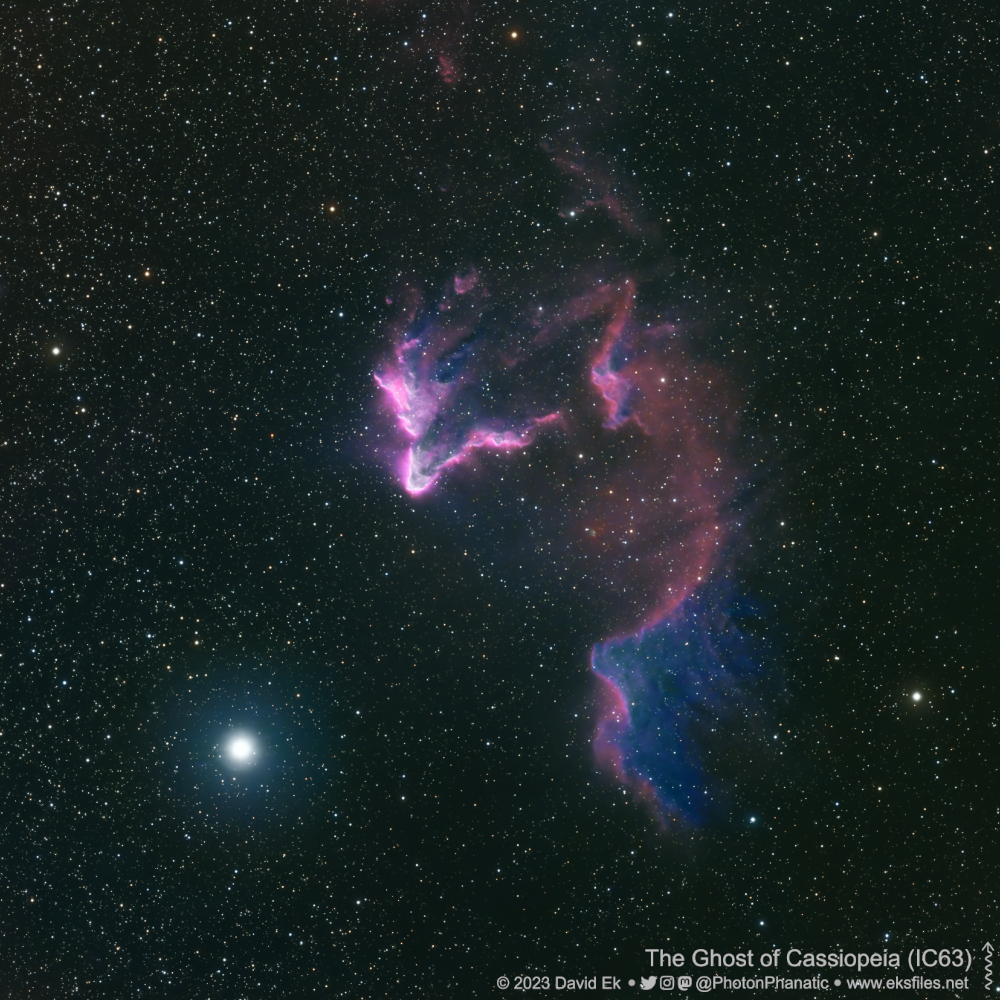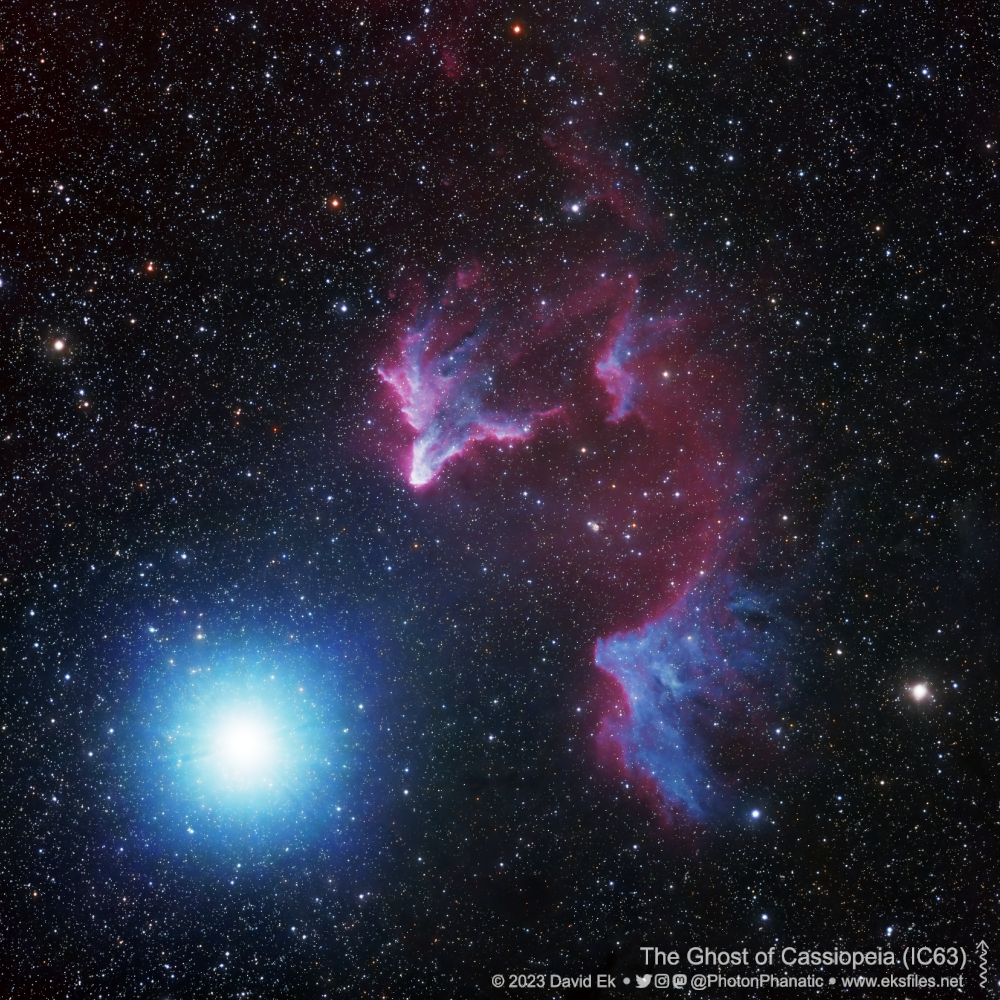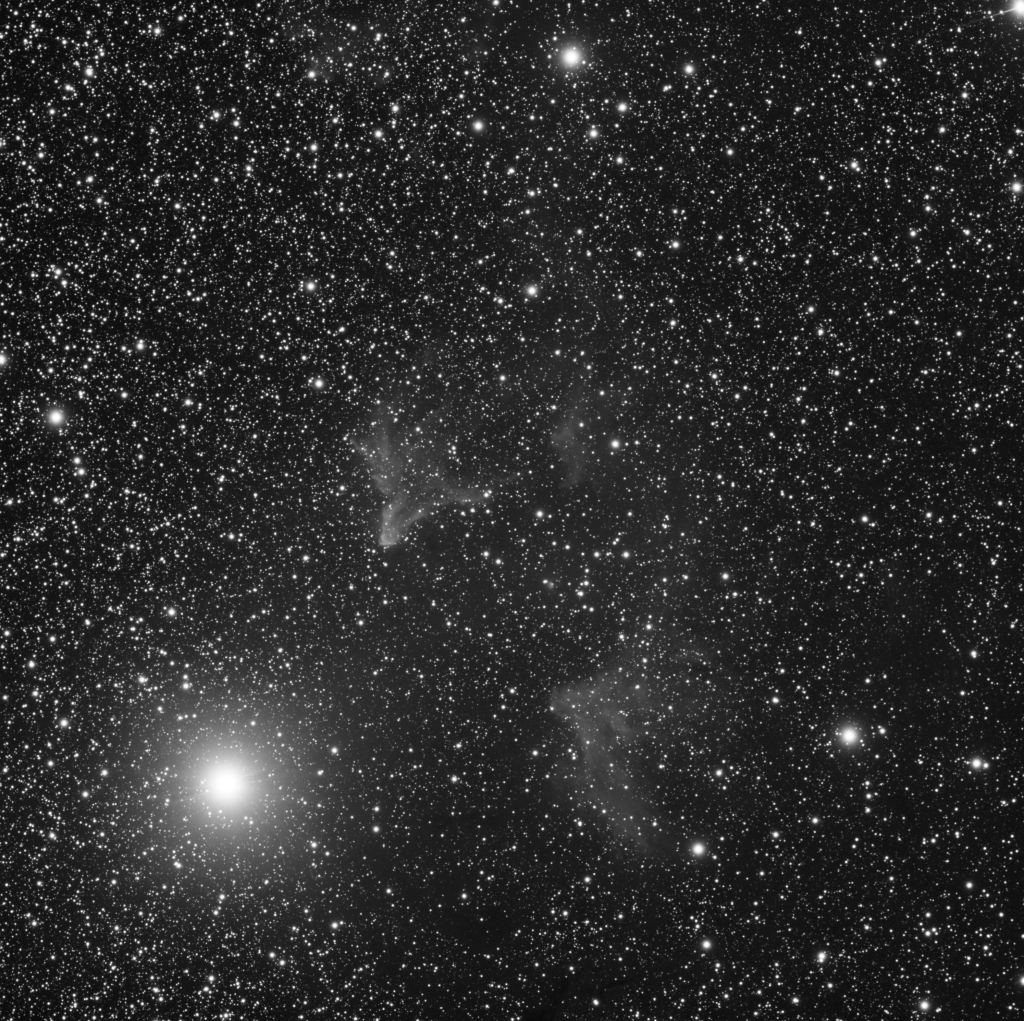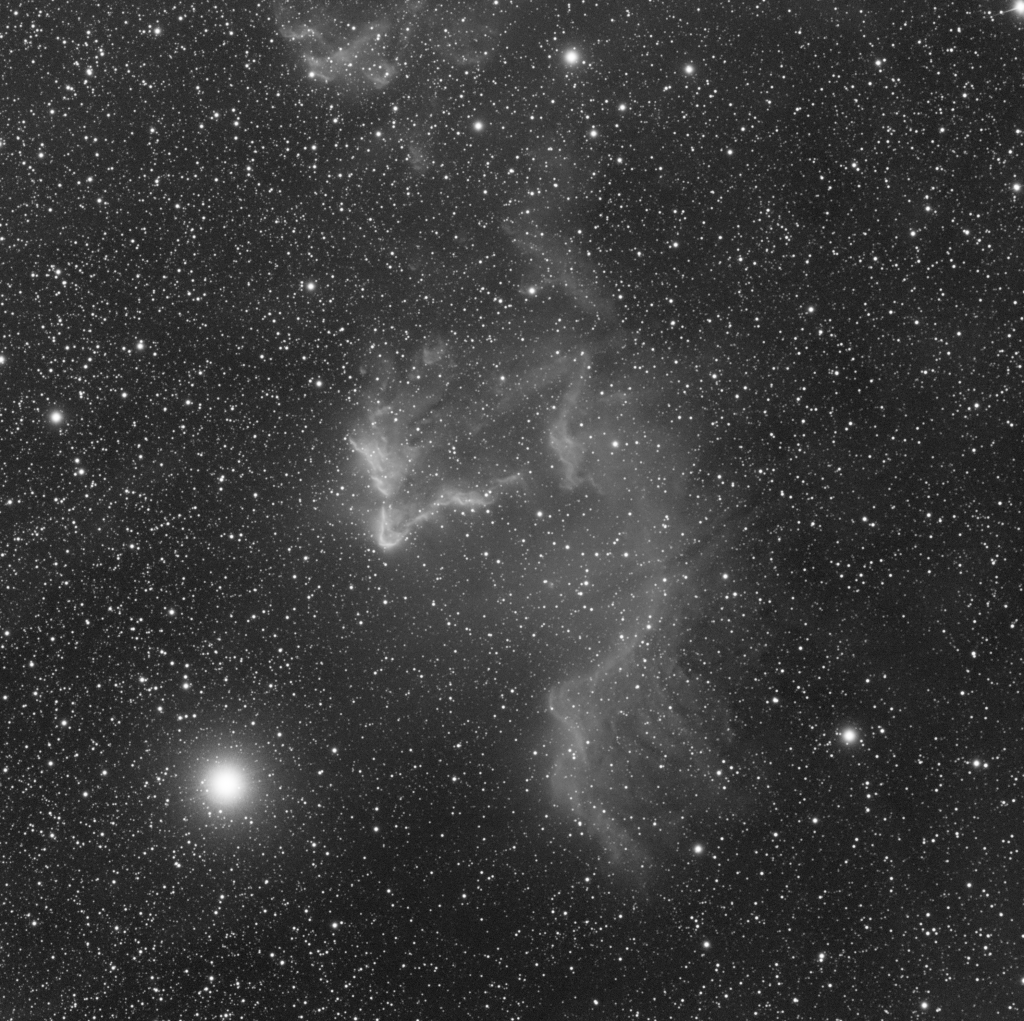With autumn approaching, the nights are longer and the weather here in the mountains of Colorado gradually yields more clear nights. Combine that with a waning crescent moon, and I had two nights to shoot a new target. This time I shot the Ghost of Cassiopeia (IC 63) with my ZWO ASI533MM Pro camera through my Sky-Watcher Esprit 100 refractor, using L, R, G, B, and Ha filters. This target is a bit challenging to process due to its close proximity to Navi (gamma Cassiopeia). Processed using PixInsight and Affinity Photo. I was able to collect almost 13 hours of data on this target. I took 3-min exposures in L, R, G, and B, and 5-minute exposures in Ha–a total of 39 exposures in R, 38 in G, B, and Ha, and 77 in L.
This was a tricky image to process because of the presence of the bright star Navi in the frame. The luminance frames I took had a humongous halo around Navi, and the since this target is smack dab in the middle of the Milky Way, the stars were pretty overwhelming. My first attempt looked like this:
This is what the luminance image looked like:
I’ll admit that I’m still learning how to do LRGB images, and I struggled mightily with processing this one. Then I had an idea–the H-alpha for this target had much less halo and much more nebulosity. Why not try using the H-alpha for the luminance channel? Here it is:
Granted, this trick isn’t always going to work, but in this case it was just what I needed. I need to rethink how I shoot luminance frames for LRGB images.




